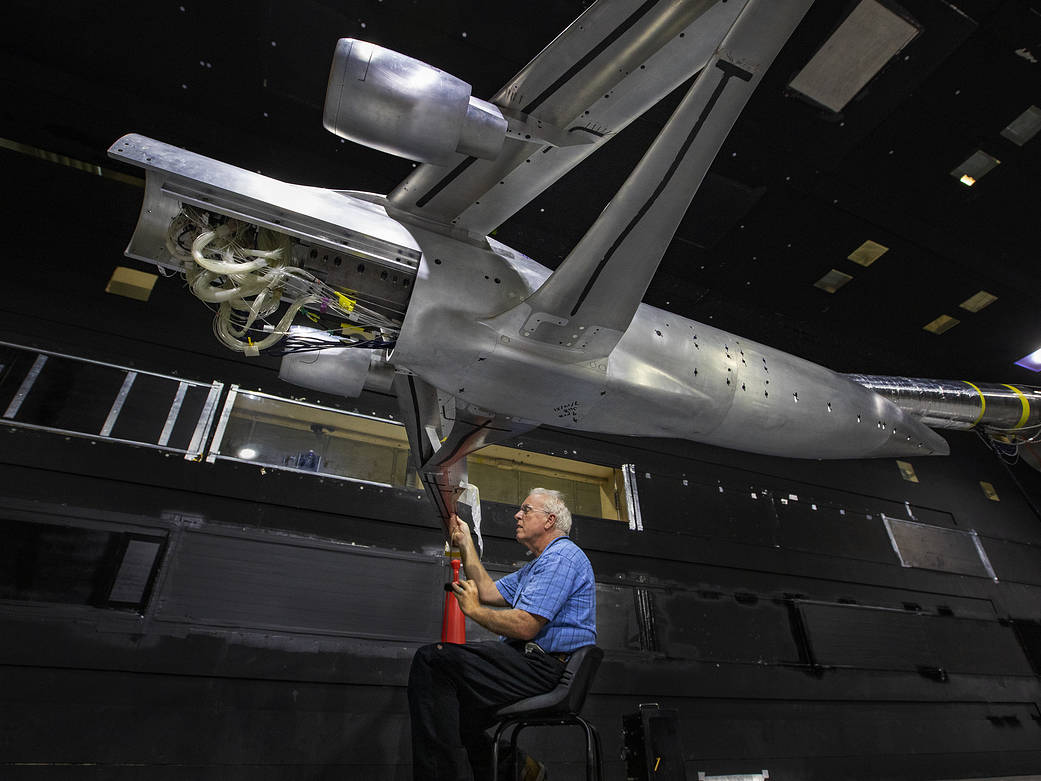Instrumentation technician Michael Hodgins performs installation measures on the trans-sonic truss-braced wing (TTBW) model at Langley Research Center’s 14×22 subsonic wind tunnel. The unique design of the aircraft’s wings reduces drag during flight, which in turn reduces fuel consumption by up to 10 percent. This concept is part of an ongoing initiative by NASA, industry partners, and academia to make the future of aviation more environmentally friendly through the Sustainable Flight National Partnership (SFNP). The SFNP will expand research for sustainable aviation by developing and testing new technologies for aircraft, new automation tools for greener and safer airspace operations, and sustainable energy options for aircraft propulsion. The TTBW will undergo a variety of aerodynamic testing as researchers continue to test key flight components such as increased lift and reduced drag.
Image and Text Credit: NASA/Langley Research Center/David Meade
在兰利研究中心的14×22亚音速风洞中,仪表技术员迈克尔·霍金斯(Michael Hodgins)对跨音速桁架式机翼(TTBW)模型进行安装测量。飞机机翼的独特设计减少了飞行中的阻力,从而减少了高达10%的燃料消耗。这一概念是NASA、业界合作伙伴和学术界正在进行的计划的一部分,目的是通过国家可持续飞行伙伴关系(SFNP)使未来的航空更加环保。SFNP将通过开发和测试飞机的新技术、用于更环保和更安全的空域操作的新自动化工具以及用于飞机推进的可持续能源选项,扩大对可持续航空研究。TTBW将进行各种空气动力学测试,研究人员将继续测试关键飞行部件,如增加升力和减少阻力。
图片和文字来源:NASA/兰利研究中心/大卫·米德







